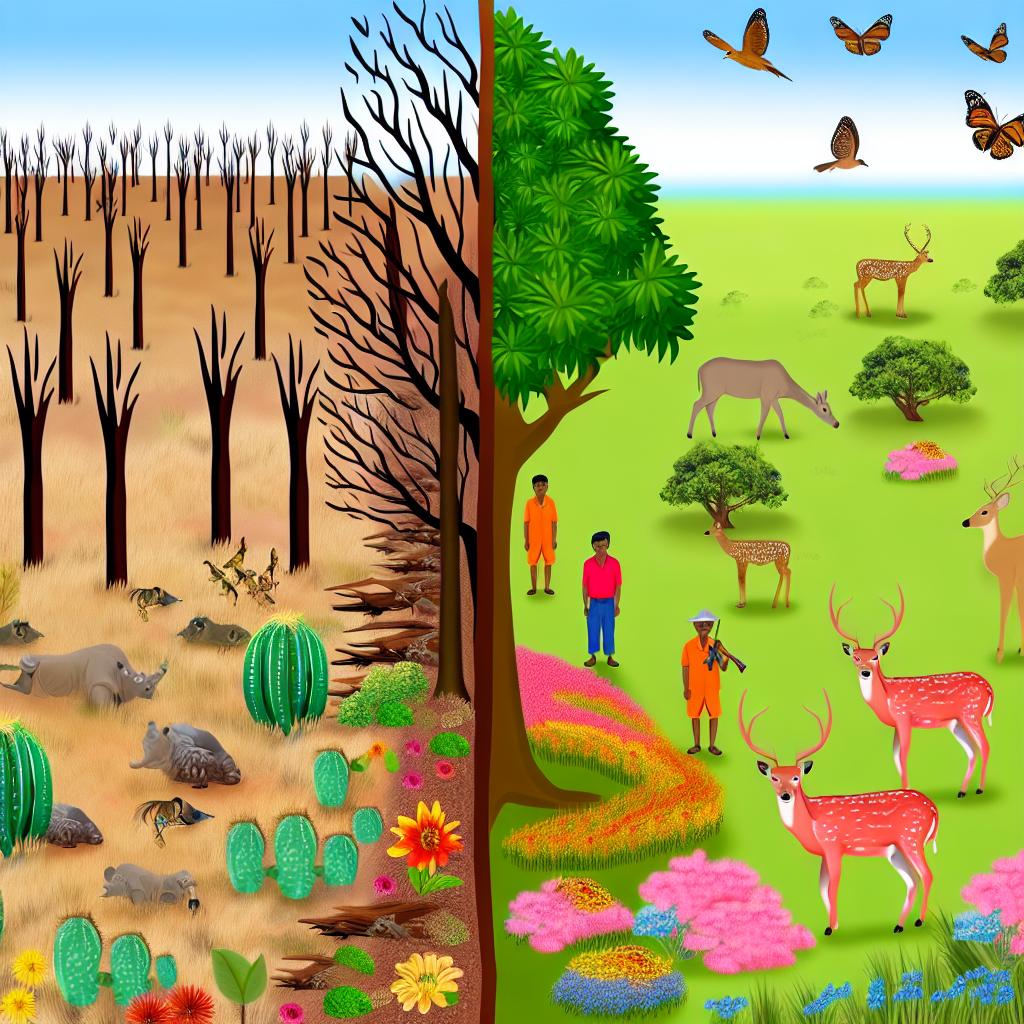
The Impact of Rewildering on Biodiversity
The Concept of Rewilding
Rewilding is an innovative ecological restoration strategy primarily focused on reinstating ecosystems to their natural states by reintroducing native species and strategically managing landscapes to enhance biodiversity. This approach aspires to diminish human influences, thus enabling natural ecological processes to resume and thrive. Various methods are employed in rewilding, such as the reintroduction of apex predators, the removal of human-made barriers, and the revitalization of rivers and wetlands.
The Role of Apex Predators
A key component of rewilding is the reintroduction of apex predators, which are pivotal in sustaining ecological balance. Apex predators significantly influence the ecosystem dynamics by regulating the population of herbivores and smaller predatory species. This control helps avert overgrazing and promotes plant species diversity, thereby supporting an array of organisms across different trophic levels.
Case Study: The Yellowstone Wolves
The reintroduction of wolves in Yellowstone National Park during the mid-1990s serves as a hallmark illustration of rewilding’s success. Prior to their reintroduction, the absence of wolves resulted in a burgeoning elk population, which subsequently inflicted extensive harm on the park’s vegetation. Reintroducing wolves moderated the elk numbers, fostering vegetation recovery and improving ecosystems for other species such as beavers and birds. This effect, known as a trophic cascade, underscores the vital role apex predators play in enhancing biodiversity.
Restoration of Natural Processes
Rewilding initiatives prioritize the restoration of natural ecological processes including flooding, wildfires, and other environmental dynamics that shape landscapes. Allowing such natural phenomena to occur supports the development of diverse habitats, which are essential for various species. For instance, periodic flooding in wetland regions rejuvenates soil nutrients and creates breeding habitats for numerous aquatic organisms.
Floodplains and Biodiversity
In Europe, the restoration of natural floodplains has significantly boosted local biodiversity. Reconnecting rivers with their floodplains has improved water filtration, created habitats for fish and avian species, and bolstered plant diversity. These revitalized ecosystems deliver essential ecosystem services, thereby contributing to human well-being and environmental health.
Challenges and Considerations
Despite its attractive benefits, rewilding faces numerous challenges. One primary concern is the potential for conflict between human populations and wildlife, especially in scenarios where reintroduced species might interact closely with human communities. Engaging local communities and stakeholders is crucial in the planning and execution stages to address these concerns and promote coexistence.
The Importance of Community Involvement
Successful rewilding projects extensively involve local communities, emphasizing collaboration and consultation. By recognizing the socioeconomic impacts and ensuring that local populations reap benefits from restored ecosystems, rewilding projects can garner public support, facilitating long-term sustainability. Community involvement is vital in aligning project goals with local interests and needs, thus securing a more harmonious ecological project.
Advanced Techniques in Rewilding
Rewilding efforts have begun incorporating advanced scientific methodologies and technologies to monitor and manage ecosystems effectively. Satellite imagery, drones, and Geographic Information System (GIS) mapping are harnessed to gather critical data, aiding in informed decision-making and assessment of project successes.
Technology and Data in Rewilding
The utilization of cutting-edge technology allows for detailed observation and analysis of environmental changes. This capability enhances understanding of ecosystem dynamics and fosters adaptive management strategies. Real-time data provided by technology can inform conservationists about immediate challenges, thereby enabling more effective responses and adjustments in rewilding strategies.
Educational and Economic Aspects
Rewilding also presents educational opportunities, offering invaluable insights into the functioning and complexity of natural ecosystems. By engaging educational institutions and boosting public awareness, rewilding can inspire a new generation of ecologists and conservationists.
Economic Incentives
From an economic perspective, tourism associated with rewilded areas offers substantial revenue opportunities. Nature-based tourism attracts visitors eager to experience revitalized ecosystems, thus supporting local economies. By linking economic benefits with ecosystem restoration, rewilding can galvanize broader societal support and investment.
Conclusion
Rewilding holds promise as a transformative approach to bolstering biodiversity by restoring ecological balance and fostering natural processes. Although challenges persist, constant research and effective management strategies can address these issues and optimize rewilding benefits. As rewilding strategies gain momentum globally, the vision of enhanced biodiversity and improved ecosystem services becomes progressively attainable.
With the growing emphasis on ecological restoration, rewilding demonstrates significant potential to redefine conservation efforts, promoting resilient and adaptive ecosystems. Interested individuals and organizations may explore further through resources published by leading environmental bodies such as Rewilding Europe and The Ecological Society.